Explore Takaoka - Japan Travel, Asia
Nestled in Toyama Prefecture, Takaoka is a city brimming with historical charm and modern attractions. This captivating destination offers a unique blend of ancient traditions and contemporary culture, making it an ideal spot for travelers seeking an authentic Japanese experience. Whether you're exploring its historical sites or savoring local delicacies, Takaoka promises an unforgettable journey.
Population: Approximately 173,000 in 2018.
Economy: Takaoka’s economy thrives on manufacturing, particularly copperware and metal crafts, alongside a growing service sector including tourism, and other local businesses.
Landmarks: Famous for the Takaoka Great Buddha, Zuiryu-ji Temple, and Kanayamachi.
Japan
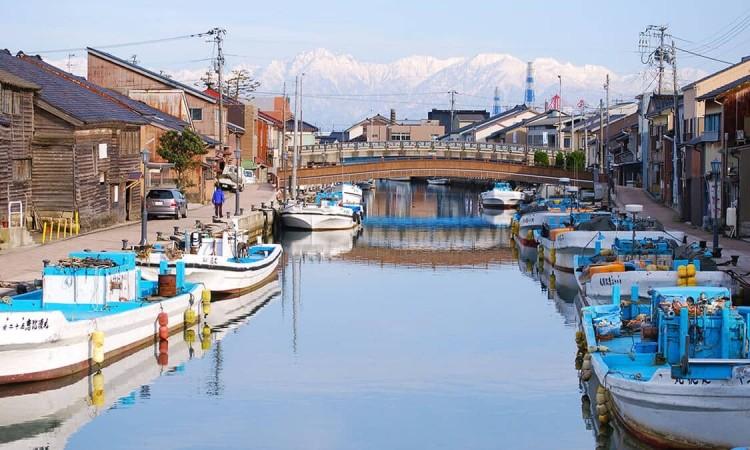
Overview of Takaoka
History & Cultural Influence
Takaoka boasts a rich history that dates back to its founding by Maeda Toshinaga in 1609. As the second lord of the Kaga Domain, Toshinaga established Takaoka as a key cultural and economic hub. The influence of the Maeda Clan is still evident today, especially in the city's renowned craftsmanship. Along with the rich historical heritage, Takaoka's vibrant culture also left plenty of room for visitors to explore. One of Takaoka's most significant cultural contributions is its exquisite copperware. You can explore workshops and even try their hand at creating their own piece. Another must-visit is Zuiryu-ji Temple, a National Treasure of Japan, which showcases stunning architecture and serene gardens that reflect the city's spiritual heritage.
Interaction with The Locals
Takaoka has a population of approximately 173,000 residents. The citizens of Takaoka are known for their warmth and hospitality, making visitors feel welcome wherever they set feets on. The community is deeply rooted in tradition, with a strong emphasis on cultural heritage and craftsmanship. Despite modernization, the people of Takaoka maintain a harmonious balance between preserving their rich history and embracing contemporary life.
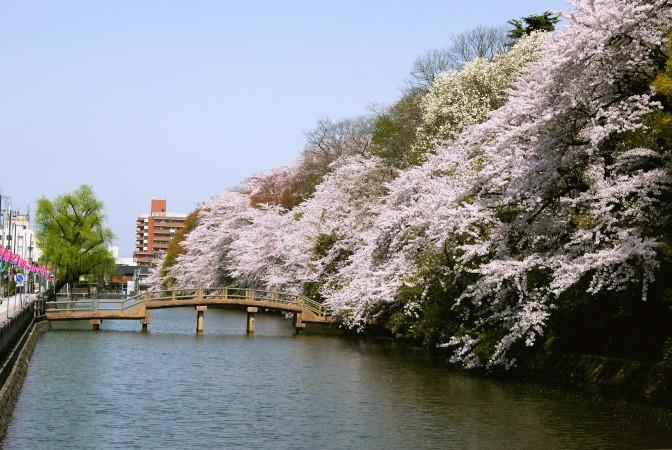
Takaoka-Shi, Tomaya Prefecture, Japan - © Tomaya Tourism
Top Attractions in Takaoka
Takaoka is home to a variety of attractions that cater to different interests. These attractions, steeped in history and natural beauty, showcase the diverse appeal of Takaoka, making them must-visit sites in Takaoka.
- Takaoka Great Buddha (Takaoka Daibutsu): One of Japan's top three Great Buddhas, the Takaoka Daibutsu stands 15.85 meters tall. This impressive bronze statue, completed in 1933, symbolizes the city's metallurgical prowess. Visitors can explore the temple grounds and learn about the statue's history and significance.
- Zuiryu-ji Temple: Designated a National Treasure, Zuiryu-ji Temple is a stunning example of early Edo-period architecture. The temple's beautifully landscaped gardens and intricate wooden structures offer a peaceful retreat for reflection and admiration.
- Kanayamachi: This historic district features well-preserved Edo-period houses and streets. Strolling through Kanayamachi feels like stepping back in time. The area is also known for its traditional shops selling Takaoka Copperware and other local crafts.
- Takaoka Castle Park: Built on the ruins of Takaoka Castle, this park is a favorite among locals and tourists alike. The expansive grounds include cherry blossom trees, ponds, and walking trails. It's an ideal spot for a leisurely stroll or a picnic.
- Amaharashi Coast: Famous for its picturesque views of the Tateyama Mountain Range, Amaharashi Coast is a must-see for nature lovers. The coast's scenic beauty changes with the seasons, offering breathtaking views year-round.
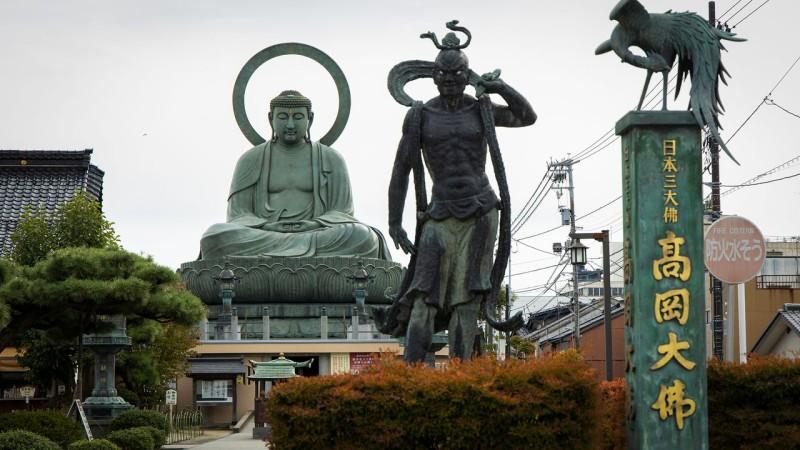
Takaoka Great Buddha Statue - © Nippon
Must-Try Dishes in Takaoka
Takaoka's culinary scene offers a delightful array of flavors that reflect the region's rich history and cultural heritage. Here are some must-try dishes:
- White Shrimp (Shiroebi): The uniqueness of white shrimp, frequently referred to as the "jewel of Toyama Bay," is definitely a specialty from the ocean that you just must try. It can be enjoyed as sashimi, tempura, or in a simple, sweet soy sauce marinade.
- Toyama Black Ramen: Though not exclusive to Takaoka, Toyama Black Ramen is a regional favorite with its dark soy-based broth, thick noodles, and rich flavors. It's a comforting dish perfect for a chilly day.
- Hotaru Ika (Firefly Squid): This seasonal delicacy, usually available in spring, features tiny, bioluminescent squids. They are typically served as sashimi or marinated in vinegar, offering a unique and refreshing taste.
- Buri (Yellowtail) Sashimi: Toyama Bay is famous for its buri, especially during the winter months. The yellowtail sashimi is incredibly fresh and rich in flavor, often enjoyed with soy sauce and wasabi.
- Miso Soup with Crab: Takaoka’s proximity to the sea means fresh crab is readily available. Miso soup made with local crab is a comforting and flavorful dish, offering a taste of the ocean's bounty.
- Botan Shrimp: Also known as peony shrimp, botan shrimp are prized for their sweet and delicate flavor. To bring forth their inherent sweetness, they are frequently served either lightly grilled or raw as sashimi.
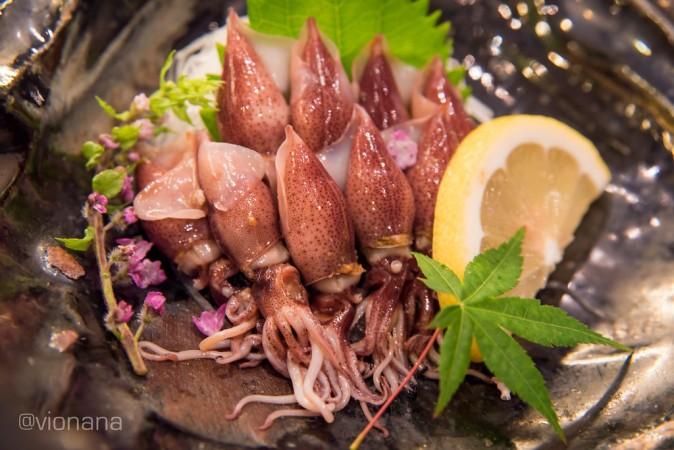
Hotaru Ika - © Flickr
Festivals & Local Celebrations
Takaoka hosts a variety of vibrant festivals and local celebrations that showcase its rich cultural heritage and community spirit. These festivals and celebrations offer visitors a chance to experience Takaoka's vibrant cultural life and engage with the local community. Each event provides unique insights into the city's traditions and artistic heritage, making them essential experiences for any traveler.
Takaoka Mikurumayama Festival
Held in early May, this event is acknowledged as an Important Intangible Folk Cultural Property. Takaoka Mikurumayama Festival features ornate floats, called yama, that are paraded around the city. The floats, which are intricately designed and elaborately decorated with gold and lacquer, are a testament to Takaoka's historical craftsmanship. The highlight is the evening activities, when the floats are illuminated and create a surreal scene. A vibrant and joyous environment is created by the festival's traditional music and dance acts.
Takaoka Tanabata Festival
Celebrated in early July, this festival transforms the city with colorful decorations and traditional performances. Vibrant Tanabata bamboo branches decorated in paper strips and wish-granting decorations line the streets. The festival includes parades, live music, dance performances, and food stalls offering local delicacies. The highlight is the grand parade featuring beautifully decorated floats and participants in traditional attire, celebrating the legend of the star-crossed lovers, Orihime and Hikoboshi.
Zuiryu-ji Temple Autumn Festival
This October festival celebrates the changing seasons with traditional music, dance performances, and tea ceremonies within the serene grounds of Zuiryu-ji Temple. The celebrations have a breathtaking backdrop provided by the temple, which is a National Treasure of Japan. Visitors can enjoy classical Japanese performances such as Noh theater and koto music, as well as partake in tea ceremonies that offer a peaceful and reflective experience. The festival also features a market
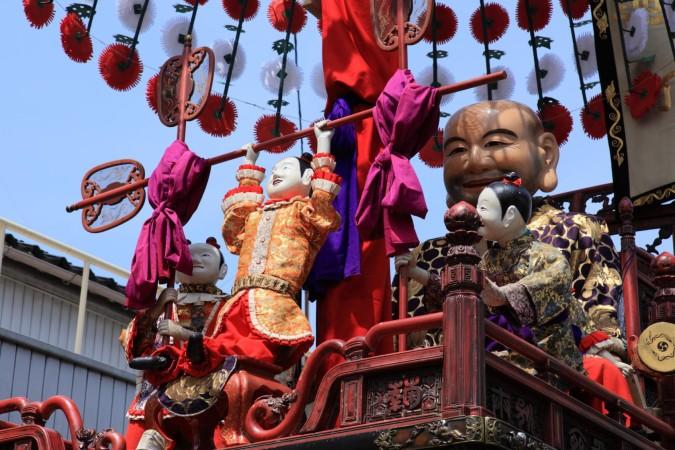
Takaoka Mikurumayama Festival - © Toyama Tourism
What to Do in Takaoka
Takaoka offers a wide range of activities that cater to various interests, ensuring a memorable experience for every visitor:
- Historical Walking Tours: Explore Takaoka's rich history through guided walking tours that take you to key historical sites such as Takaoka Great Buddha, Zuiryu-ji Temple, and Kanayamachi's old town.
- Traditional Craft Workshops: Get hands-on experience in traditional Japanese crafts. Try your hand at Takaoka Copperware making or lacquerware workshops, where skilled artisans guide you through the process.
- Nature Excursions: Take advantage of Takaoka's scenic surroundings with outdoor activities. Visit Amaharashi Coast for breathtaking views of the Tateyama Mountain Range, or hike through the picturesque landscapes around the city.
- Cultural Experiences: Participate in tea ceremonies, ikebana (flower arranging) classes, and other cultural activities that offer a deeper understanding of Japanese traditions.
Shopping in Takaoka
Shopping in Takaoka offers a delightful mix of traditional and modern experiences, providing unique souvenirs and local products that reflect the city’s rich cultural heritage. Here are some of the best places to shop in Takaoka:
- Takaoka Daibutsu Market: This lively market is the perfect place to experience the local lifestyle. Here you'll discover handcrafted products, seafood, and fresh veggies. It’s also an excellent spot to pick up authentic souvenirs, such as locally crafted items and regional specialties.
- Kanayamachi: This historic district is famous for its traditional crafts, especially Takaoka Copperware. Stroll through the charming streets and explore specialty shops where you can purchase exquisite copper items, lacquerware, and other handmade crafts.
- Takaoka Lacquerware Hall: Dedicated to showcasing the city's renowned lacquerware, this hall offers a wide range of beautifully crafted items. You can find everything from elegant tableware to decorative pieces, all reflecting the high level of craftsmanship Takaoka is known for.
- Otaya Serio: Located near Takaoka Station, this shopping center combines retail stores with dining and entertainment options. It’s a convenient spot for visitors to explore a variety of shops, including local boutiques and well-known brands.
- Tokyu Department Store: This upscale department store features a variety of high-end brands and products. It’s a great place to find luxury items, including designer fashion, cosmetics, and gourmet foods.
- Nishimatsuya Chain: Specializing in affordable products for families, this chain offers a wide range of items, from clothing and accessories to toys and household goods. It’s a practical choice for everyday shopping needs.
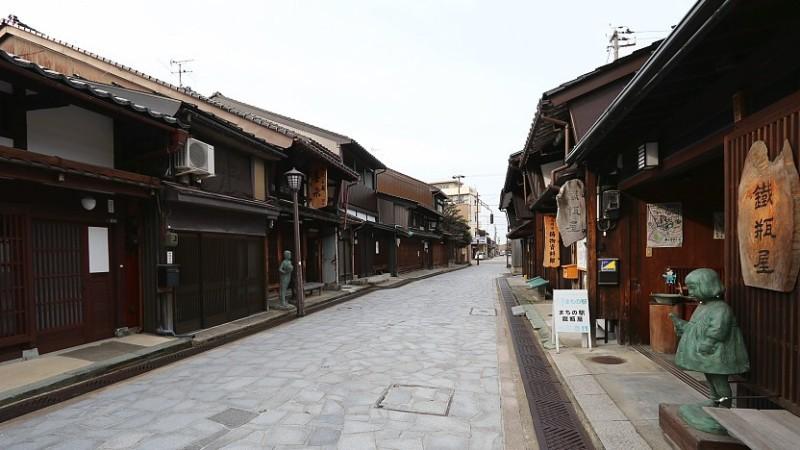
Kanayamachi - © Japan Tourism
Weather in Takaoka: Best Time to Visit
Takaoka experiences a temperate climate with four distinct seasons, making it an attractive destination year-round.
- Spring in Takaoka: Takaoka’s spring is characterized by mild temperatures and blooming cherry blossoms with average temperatures can range from 10°C to 20°C (50°F to 68°F). This season is perfect for outdoor activities and enjoying the vibrant cherry blossom festivals.
- Summer in Takaoka: Takaoka’s summer sees warm and humid weather, with temperatures ranging from 20°C to 30°C (68°F to 86°F). It’s an excellent time for beach outings and exploring the lush green landscapes. Be prepared for occasional rain showers and pack light, breathable clothing.
- Autumn in Takaoka: Autumn is marked by cooler temperatures and stunning fall foliage. Average temperatures range from 10°C to 25°C (50°F to 77°F). This season is ideal for scenic hikes and participating in local harvest festivals. The scene is lovely thanks to the clear air and vibrant foliage.
- Winter in Takaoka: Winter in this region can be cold and snowy, with temperatures ranging from -2°C to 8°C (28°F to 46°F). The city occasionally receives heavy snowfall, transforming it into a winter wonderland. Skiing and snowboarding are available in neighboring mountain resorts for fans of winter sports. Make sure to dress warmly and prepare for icy conditions.
Essential Travel Information
Getting Around Takaoka
Navigating Takaoka is convenient due to its well-developed transportation network. The city’s central train station connects to major destinations and local areas, while an extensive bus system covers key attractions and neighborhoods. For a scenic and affordable option, the tramway offers easy travel within the city. Taxis provide a comfortable choice for those needing convenience, especially late at night or when carrying heavy luggage. Takaoka is also bicycle-friendly, with designated lanes and rental services for exploring at your own pace.
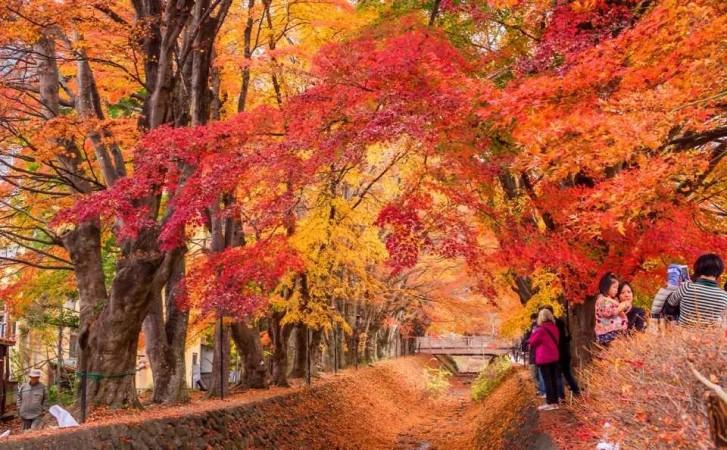
Autumn in Takaoka - © Japan Tourism
ATM & Banking Services
Accessing banking services and ATMs in Takaoka is straightforward, ensuring you can manage your finances with ease. ATMs are widely available at convenience stores, train stations, and shopping centers, with many accepting international cards. Several banks in Takaoka offer various transactions, including currency exchange, with English-language support. While credit cards are accepted at most hotels, restaurants, and larger stores, it's advisable to carry some yen for smaller shops and traditional markets that may only accept cash.
Where to Stay in Takaoka
Takaoka offers a diverse range of accommodation options to suit various preferences and budgets. Visitors can choose from modern hotels with excellent amenities and convenient locations, traditional ryokans that provide a quintessential Japanese experience with tatami rooms and hot spring baths, and comfortable guesthouses and hostels that are perfect for tourists on a tight budget. Whether you prefer the comfort of a hotel, the charm of a ryokan, or the practicality of a guesthouse, Takaoka has a suitable option for every traveler.
Des articles pour vous

Voyage à Kampong Cham - Cambodge, Asie
Kampong Cham est une charmante ville riveraine située le long du fleuve Mékong. Connue pour son importance historique et ses attractions culturelles, Kampong Cham offre un mélange d'architecture coloniale, de temples anciens et de paysages pittoresques. Kampong Cham est reliée au district voisin de Tbong Khmum par le pont Kizuna, le premier pont au Cambodge à traverser le fleuve Mékong, en faisant un carrefour de transport crucial pour la région.
Population : Estimation de 80 000 habitants (en 2024)
Économie : Bien que n'étant pas encore une destination touristique majeure, Kampong Cham propose des sites culturels et historiques, tels que le temple Wat Nokor et le pont en bambou de Koh Pen, ainsi que des attractions naturelles comme des forêts et des chutes d'eau. Le gouvernement se concentre sur le développement du tourisme pour améliorer l'économie locale.
Points d'intérêt : Wat Nokor Bachey, Phnom Han Chey, Phnom Pros et Phnom Srey, pont en bambou de Koh Pen, Wat Joy T'maw, Preah Theat Teuk Chha, piste d'atterrissage abandonnée de l'US.

Explorez Nha Trang - Voyage au centre du Vietnam, Asie
Nichée le long de la magnifique côte du Vietnam, Nha Trang se distingue comme une destination de premier choix pour les voyageurs. Cette ville côtière, réputée pour ses superbes plages et sa vie marine foisonnante, s'adresse à tous. Nha Trang vous accueille à bras ouverts, que vous recherchiez des aventures, de la culture ou de la détente au bord de la mer. Ce guide vous fera découvrir les points forts de cet endroit magnifique, facilitant ainsi la planification de votre voyage de manière fluide et excitante.
Population : Environ 423 000 habitants en 2019.
Économie : L'un des principaux centres touristiques du Vietnam et la plus grande économie de la province de Khanh Hoa.
Sites emblématiques : Célèbre pour les tours Cham de Po Nagar, la cathédrale de Nha Trang et l'île Hon Mun.

Voyage à Sihanoukville - Cambodge, Asie
Sihanoukville, une ville côtière du sud-ouest du Cambodge, est la capitale de la province de Preah Sihanouk. Située sur une péninsule le long du golfe de Thaïlande, la ville est bien reliée à Phnom Penh par des autoroutes principales et dispose d'un aéroport international.
La ville abrite le seul port en eau profonde du Cambodge, jouant un rôle crucial dans la logistique et le commerce du pays. Les plages magnifiques de Sihanoukville, telles qu'Ochheuteal et Serendipity, attirent aussi bien les touristes nationaux qu'internationaux. Le développement économique a prospéré ces dernières années, en particulier grâce à la création de la Zone économique spéciale de Sihanoukville (SSEZ) et aux investissements chinois dans les casinos, l'immobilier et les stations balnéaires. La ville offre également des attractions naturelles telles que le parc national de Ream et plusieurs îles voisines, en faisant une destination variée pour les voyageurs d'affaires et de loisirs.
Population : La population de Sihanoukville était d'environ 160 000 habitants en 2024.
Économie : Sihanoukville, une ville côtière en pleine croissance au Cambodge, se distingue par son mélange dynamique de développement économique et de tourisme. La Zone économique spéciale de Sihanoukville (SSEZ) est devenue un pôle industriel majeur, abritant plus de 180 entreprises et créant des milliers d'emplois. Avec le seul port en eau profonde du Cambodge, la ville joue un rôle clé dans le commerce et la logistique du pays. Bien qu'elle se soit transformée d'une petite ville balnéaire tranquille en un centre urbain animé, Sihanoukville reste célèbre pour ses plages immaculées, attirant des touristes tout au long de l'année. Les investissements chinois importants ont alimenté la croissance des hôtels, des casinos et de l'immobilier, faisant de la ville un centre d'opportunités économiques et d'hospitalité.
Monuments : Plage d'Otres, Plage d'Ochheuteal, Plage de l'Indépendance, Parc national de Ream, Chute d'eau de Kbal Chhay, Monument des Lions d'Or, Wat Leu.

Explorez Kharkhorin - Voyage en Mongolie, Asie
Bienvenue à Kharkhorin, un trésor historique niché au cœur de la Mongolie. Ancienne capitale vibrante de l'Empire Mongol sous le légendaire Gengis Khan, Kharkhorin se dresse comme un témoignage de la riche culture et de l'histoire de la Mongolie. Cette ville antique possède une combinaison unique d'importance historique et de paysages époustouflants, en faisant une destination incontournable pour un voyage de rêve en Mongolie. En mettant le pied à Kharkhorin, vous ferez un saut dans le temps, à une époque de grands palais, de routes commerciales prospères et d'échanges culturels sans pareils. Que vous soyez intrigué par les ruines anciennes, désireux d'explorer les traditions locales ou simplement en quête d'une immersion dans la beauté naturelle de la Mongolie, Kharkhorin a quelque chose à offrir à chacun.
Population : Environ 1 000 habitants en 2020.
Économie : L'une des attractions touristiques les plus importantes de la Mongolie et l'ancienne capitale de l'Empire Mongol.
Monuments : Célèbre pour les Ruines de Kharkhorin, le Monastère d'Erdene Zuu, et la Vallée d'Orkhon, un site du patrimoine mondial de l'UNESCO.

Explore Luang Prabang - Laos Travel, Asia
Luang Prabang, nestled in northern Laos at the meeting point of the Mekong river and Nam Khan river, is a city celebrated for its rich cultural heritage and stunning natural beauty. Recognized as a UNESCO World Heritage Site in 1995, it boasts a unique blend of traditional Lao and French architecture that has been carefully preserved. Whether you're wandering through its ancient temples, admiring the local architecture, or soaking in the natural beauty of waterfalls and rivers, Luang Prabang offers something for everyone.
Population: Approximately 470,000 in 2020.
Economy: Luang Prabang's economy thrives on tourism, with its UNESCO status drawing visitors to its temples, natural wonders, and cultural experiences. Local crafts, hospitality, and small businesses also play vital roles, supporting the town's sustainable growth. Local crafts, hospitality, and small businesses also play vital roles, supporting the town's sustainable growth.
Landmarks: Famous for the Wat Xieng Thong, Royal Palace Museum (also known as Haw Kham), and Mount Phousi (Phou Si Hill).Luang Prabang, nestled in northern Laos at the meeting point of the Mekong river and Nam Khan river, is a city celebrated for its rich cultural heritage and stunning natural beauty. Recognized as a UNESCO World Heritage Site in 1995, it boasts a unique blend of traditional Lao and French architecture that has been carefully preserved. Whether you're wandering through its ancient temples, admiring the local architecture, or soaking in the natural beauty of waterfalls and rivers, Luang Prabang offers something for everyone.
Population: Approximately 470,000 in 2020.
Economy: Luang Prabang's economy thrives on tourism, with its UNESCO status drawing visitors to its temples, natural wonders, and cultural experiences. Local crafts, hospitality, and small businesses also play vital roles, supporting the town's sustainable growth. Local crafts, hospitality, and small businesses also play vital roles, supporting the town's sustainable growth.
Landmarks: Famous for the Wat Xieng Thong, Royal Palace Museum (also known as Haw Kham), and Mount Phousi (Phou Si Hill).

Explore Vientiane - Laos Travel, Asia
Vientiane, the capital of Laos, offers a unique travel experience for those looking to explore a peaceful Southeast Asian city with a deep connection to its cultural roots. Unlike other bustling capitals, Vientiane boasts a serene and laid-back atmosphere, making it a perfect destination for travelers wanting to escape the chaos of more crowded cities. This charming city sits along the Mekong River, offering scenic views, rich history, and a vibrant yet tranquil way of life. As a gateway to exploring Laos, this capital invites you to slow down, immerse in its heritage, and enjoy the local flavors.
Population: Approximately 840,000 in 2023.
Economy: Vientiane's economy is growing steadily, driven by government services, trade, and tourism. Key sectors include agriculture, manufacturing, and construction. The city's strategic location along the Mekong River supports trade with neighboring Thailand and Vietnam.
Landmarks: Famous for the Pha That Luang, Patuxai, and the Buddha Park (or Wat Xieng Khuan).
